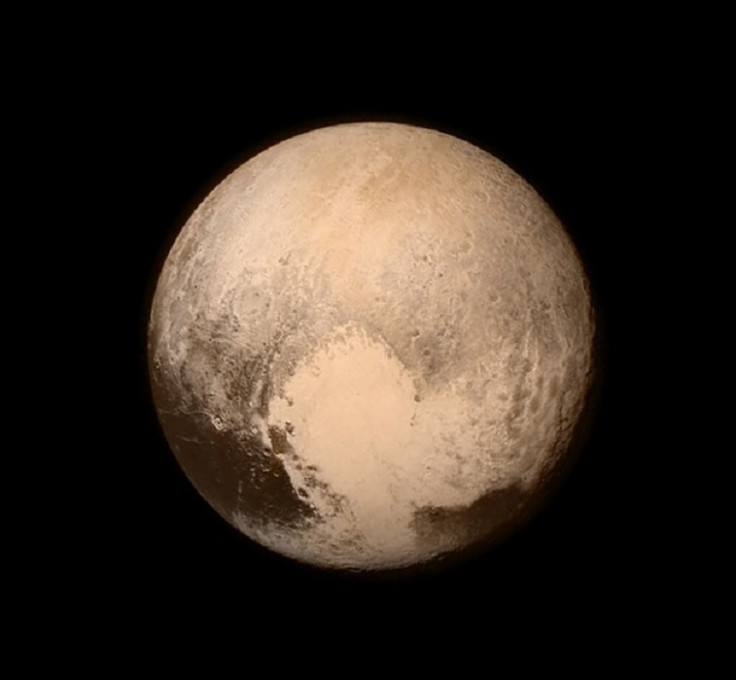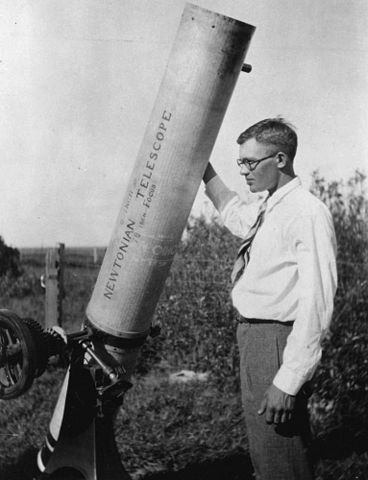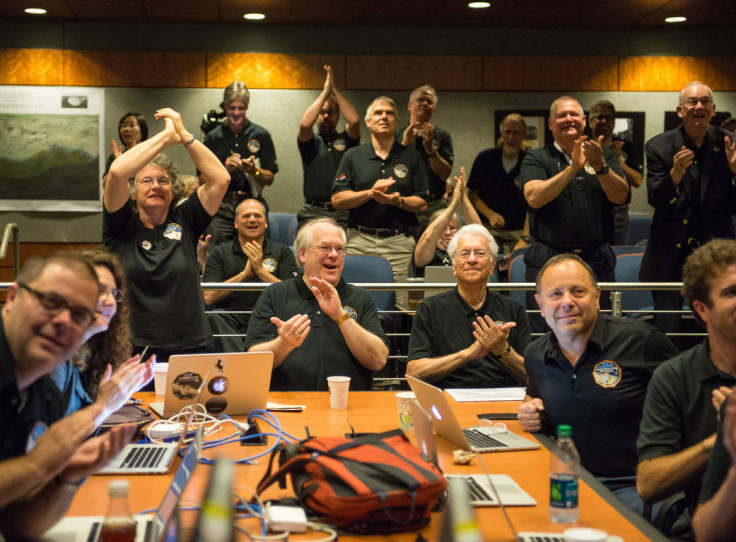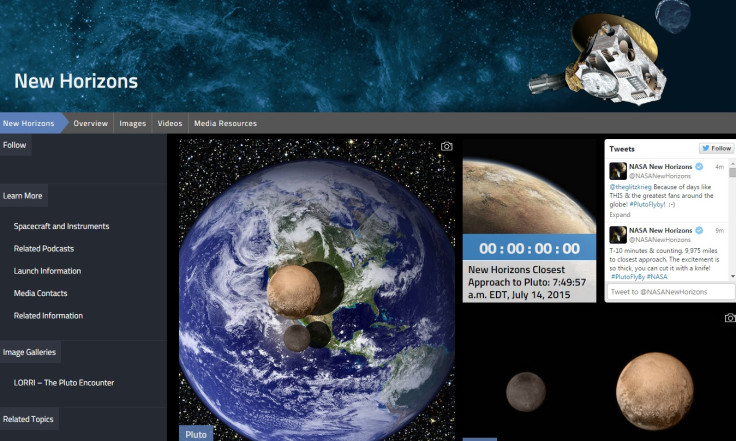New Horizons Pluto flyby as it happened: All the news and updates from historic mission to dwarf planet

New Horizons is about to reach Pluto after travelling around three billion miles over nine years. The spacecraft is expected to reach its closest point - 7,800 miles (12,500km) – at approximately 12.49pm GMT.
You can watch a livestream from Nasa below:
- New Horizons passed Pluto around 72 seconds early and 70km closer than planned.
- The first high resolution image of the dwarf planet was released by Nasa showing features ahead of the data being returned.
- Nasa should make contact with the spacecraft at around 2am GMT.
- After this, it will start sending back images 10 times the resolution of the best picture we currently have.
So it is now 12 hours until the New Horizons team hears back from the spacecraft - hopefully with new images and data about the dwarf planet.
As we sign off, here is the image of the spacecraft taking off from Cape Canaveral nine-and-a-half years ago.

Stern spoke to IBTimes UK about a possible Pluto lander in April. Read the interview here.
Stern said he hopes for a Pluto lander in the future: "I do thing we will return. It is so interesting we will want to go book."
However, he said it will be difficult to develop the technology to cross the solar system in a reasonable time at a slower speed that will allow the spacecraft to stop.
He said we first need to see and analyse the data that comes back from New Horizons over the coming years – then we will be able to ask the right questions about how to go about returning to Pluto.
Alice Bowman, New Horizons Mission Operations Manager, told reporters about how they expect to make contact with the spacecraft later tonight. First they establish a "handshake" to tell the craft is there. After this they will find out if it is transmitting at the correct data rate.
The real time data will then be returned – but this will be the critical points from the sub systems on board. There is not enough room to send all the data this way.
Stern on the future of New Horizons - it is powered by plutonium: "We sent plutonium back to Pluto," he joked.
It is currently producing around 202 watts of power and every year that goes by, this will fall by three. They estimate it could continue running until the mid-2030s, so about 20 more years.
At this point, New Horizons would be 100 AU from the sun (about nine billion miles). If it is healthy, they could continue to operate into the Kuiper belt, then possibly on to the deep reach of the heliosphere.
John M Grunsfeld, Associate Administrator for the Science Mission Directorate at Nasa (also known as the Hubble repair man), said the flyby has been an "amazing hallmark of human history" and that the real key to these missions is the team work involved: "That is what Nasa excels at - to do these incredible feats."
He said they will now be waiting for the ping back from New Horizons that tells us the spacecraft made it through and is ready to transmit the data.
From Nasa on Instagram:
SNEAK PEAK of gorgeous Pluto! The dwarf planet has sent a love note back to Earth via our New Horizons spacecraft, which has traveled more than 9 years and 3+ billion miles. This is the last and most detailed image of Pluto sent to Earth before the moment of closest approach - 7:49 a.m. EDT today.
This stunning image of the dwarf planet was captured from New Horizons at about 4 p.m. EDT on July 13, about 16 hours before the moment of closest approach. The spacecraft was 476,000 miles (766,000 kilometers) from the surface.
For many, the decision to declassify Pluto from a planet to a dwarf planet was controversial.
Mark Bailey, director of the Armagh Observatory in Northern Ireland told IBTimes UK that it was very much a case of semantics – that the more we discover about objects further out in our solar system, the less able we are to define them into specific categories like planet and dwarf planet (please see the International Astronomical Union (IAU) definition of a planet).
"If you're going to be pedantic and say Pluto is a planet, then the word 'planet' ceases to convey much of a meaning because it is inclusive not just of all the exoplanets that we know circulate other stars, but also right the way down to ice, rock objects like Pluto and those smaller than Pluto," he said.
Earlier this year, Alan Stern, New Horizons principal investigator told IBTimes UK about how he would like to see a Pluto lander in the future.
"We need to see what the results from New Horizons are, but I think a lander would be a spectacular mission to do next," he said. "From a lander you could also observe all of the satellites, so it could act as a very good observatory, almost like an orbiter at the same time. We very much plan to think about those kinds of things after the flyby, but first we want to see what kinds of surprises Pluto has in store."

With just 90 minutes before the flyby, here's a bit of history about Pluto.
The search for Pluto began in 1894 by Percival Lowell, who had started searching for a possible ninth planet dubbed 'Planet X'. He died in 1916, having never found the elusive celestial body.
The search for Pluto was then put on hold for decades during a legal battle with Lowell's widow. It only resumed in 1929 when a young astronomer was handed the mission.
It was officially discovered the following year by Clyde Tombaugh, a 23-year-old working at the Lowell Observatory in Arizona.
He died in 1997 and his ashes are on board the spacecraft, with a plaque reading: "Interned herein are remains of American Clyde W. Tombaugh, discoverer of Pluto and the solar system's 'third zone'. Adelle and Muron's boy, Patricia's husband, Annette and Alden's father, astronomer, teacher, punster, and friend: Clyde W. Tombaugh (1906–1997)".
Yesterday, IBTimes UK spoke to Mihaly Horanyi, principal investigator on the Student Dust Counter (SDC) on board New Horizons – one of seven instruments collecting data from the dwarf planet and its moons.
He said he is hopeful Nasa will extend the New Horizons mission so it can delve further into the Kuiper Belt: "The mission is organised in terms of primary goals. Get to Pluto and deliver the science. Then Nasa has to make a decision about extending the mission. If its good enough it could go on – and I'm sure it is. But we have to put the goods on the table. We have to deliver what the primary mission goals were."
Here's a rundown of the day ahead:
Nasa TV will be showing the Arrival at Pluto Countdown programme before the flyby at 12.49pm GMT. The moment of closest approach will include a countdown and discussion of what will happen next.
Between 1pm and 2pm there will be a media briefing and the release of an image of Pluto.
For the following three hours, scientists will be doing interviews and we will be given an updated schedule of events.
New Horizons itself will be out of communication with mission control for most of the day. It will be focusing on collecting data rather than transmitting it back to Earth.
Between 1.30am and 2.15am GMT there will be a special Phone Home programme, when New Horizons will start communicating with mission control again. The team should receive the signal at 2.02am when the spacecraft calls home. After all the celebrations (fingers crossed), a health and mission status will be broadcast live.
© Copyright IBTimes 2025. All rights reserved.


























